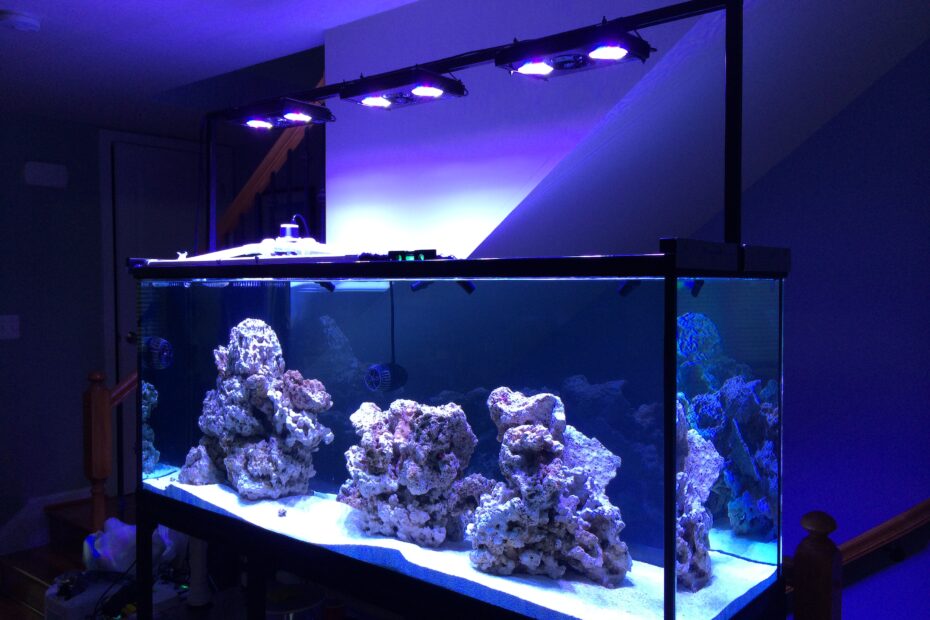Aquarium lighting is a critical aspect of tank setups, playing an essential role in the health and growth of tank inhabitants, especially photosynthetic organisms like plants and corals. Depending on your aquarium’s inhabitants and your aesthetic goals, there are various lighting options to consider:
- Purpose of Aquarium Lighting:
- Photosynthesis: Plants and photosynthetic corals require specific light wavelengths to thrive.
- Fish Health: While fish don’t require light for photosynthesis, a consistent day-night light cycle helps regulate their behavior and biological rhythms.
- Aesthetics: Lighting enhances the visual appeal of an aquarium, making colors pop and creating dynamic shadows and highlights.
- Types of Aquarium Lighting:
- Fluorescent Tubes: These have been popular for years due to their efficiency and the variety of spectrums available. They can be T5, T8, or T12, with T5 being the most compact and brightest.
- Compact Fluorescent (CFL): These are essentially coiled versions of fluorescent tubes. They provide strong light output in a compact form.
- Metal Halide: This is an intense lighting option often used for deeper reef aquariums with high light-demanding corals. They produce a lot of heat and usually require additional cooling.
- Light Emitting Diodes (LEDs): LEDs are becoming increasingly popular due to their energy efficiency, long lifespan, and ability to customize light spectrums. Many LED fixtures allow for programmable day-night cycles, intensity adjustments, and even simulating weather conditions like cloud cover or lightning storms.
- Plasma: A less common choice, plasma lighting offers a broad spectrum and is efficient, but it can be expensive.
- Spectrum and Intensity:
- Planted Freshwater Aquariums: Require light in the blue and red spectrums for photosynthesis. Look for lighting labeled as “full spectrum” or “plant growth.” The intensity needed varies based on plant types and tank depth.
- Reef Aquariums: Corals have symbiotic algae (zooxanthellae) that photosynthesize. They require specific light intensities and spectra, often emphasizing the blue spectrum. The required intensity varies based on coral types (soft corals, LPS, SPS) and tank depth.
- Duration:
- A typical photoperiod (duration of light) is around 8-12 hours daily. However, this can vary based on the specific needs of tank inhabitants. It’s essential to have a consistent light cycle, and using a timer can help.
- Additional Features:
- Dimmability: Some modern fixtures allow for dimming, which can simulate sunrise and sunset.
- Programmable Cycles: Advanced LED systems can be programmed for specific day-night cycles, intensity changes, and even special effects.
- Moonlights: These are dim blue LEDs that simulate moonlight for nighttime viewing without disturbing the tank’s inhabitants.
- Heat Production:
- Some lights, especially metal halides, produce significant heat, which can raise water temperatures. In such cases, additional cooling or a chiller might be required.
- Energy Consumption:
- LEDs generally consume less electricity than other types of lighting and have a longer lifespan.
- Budget:
- Lighting can vary significantly in price, from budget-friendly options to high-end fixtures with advanced features.
In conclusion, when selecting lighting for your aquarium, consider the specific needs of your tank’s inhabitants, the visual aesthetics you desire, and practical aspects such as energy consumption, heat production, and budget.

